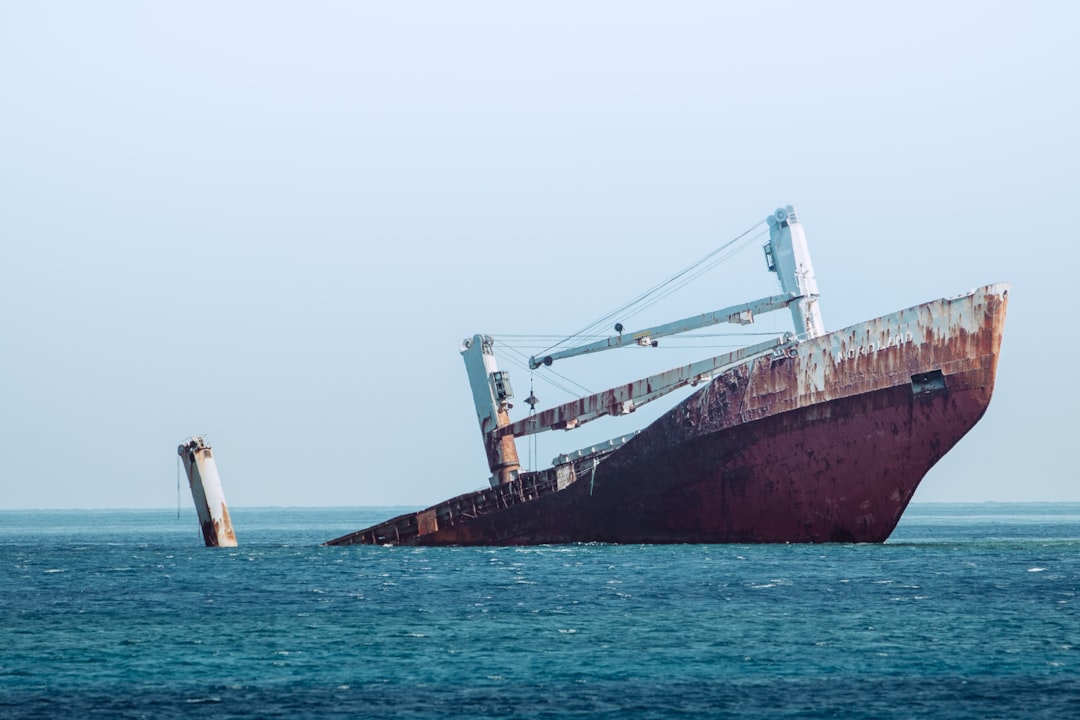Hi 👋 - Missfresh, a Chinese instant delivery business, went belly up a few days ago. Because it was public, it offers a glimpse into what financials at unicorns like Getir and GoPuff might look like. It’s not pretty. As always, thanks for reading.
If you’re finding this content valuable, consider sharing it with friends or coworkers. ❤️
For more like this once a week, consider subscribing. ❤️
Missfresh 101
While up close and personal, every business has its own nuance and warts, from a distance the color of driver’s uniforms seems to be the primary differentiator of instant grocery delivery businesses. Missfresh’s color is hot pink. The Chinese instant grocery delivery business looks a lot like Getir, GoPuff, Jokr, and a cadre of Western instant delivery businesses.
Missfresh builds and operates distributed mini-warehouses peppered around residential neighborhoods in large Chinese cities. The first opened in May 2015. Each mini-warehouse holds about 4,300 SKUs1 and provides delivery to a tight radius. Merchandising focuses on fresh produce and fast-moving consumer goods like toilet paper and toothpaste. The hope is that speedy delivery - average delivery times are approximately 35-40 minutes - and a focus on high purchase frequency categories translates into repeat purchase behavior. To date, the industry has struggled to pull this off without the liberal use of profit-sapping promotions2.
Missfresh serves a relatively young, urban customer. Its over 620 mini-warehouses are scattered across 17 first- and second-tier cities. These cities like Beijing, Shanghai, and Shenzhen are affluent and sport high population densities, an important precondition for building route density. Half of customers were between 26 and 35 while one-third were between 36 and 453.
Hot pink aside, Missfresh’s largest differentiator is that it’s public (for now anyway), so its finances are readily available. This provides a glimpse into what P&Ls at private firms like Getir and GoPuff might look like. They’re not pretty.

This Is Fine?
Like its Western peers, Missfresh generated strong growth, but consumed cash and never turned a profit. Founded in 2014 by Xu Zheng, a former Lenovo executive, the company opened its first mini-warehouse in 2015. It came of age during a period when venture funding was biased towards blitzscaling and growth, as opposed to capital efficiency. The company raised over $1 billion privately, including backing from Tiger Global and Goldman Sachs before going public on the Nasdaq in June 2021. Missfresh’s IPO priced at $13 per share, equating to a $2.8 billion valuation, but shares tumbled over 25% on its first day of trading, closing at $9.66. Things went south from there. By late July 2022, they changed hands for less than a quarter.
Instant grocery delivery is capital intensive. Building a network of mini-warehouses, stocking them with perishable inventory, and assembling a fleet delivery drivers requires boatloads of capital. Further, the underlying business, grocery, relies on high volumes to compensate for razor thin margins. Success requires scale and efficiency. Missfresh attained neither. Combining grocery with speedy delivery is trying to thread a needle through a microscopic hole. To date, there’s scant evidence that this can be done profitably. Missfresh adds a growing pile of corpses who tried and failed.
With cash balances dwindling, on July 28, 2022, the company shut down its same-day grocery delivery service, which accounted for about 85% of revenue, and laid off most of its employees. By August 2nd, its app stopped taking orders4. Suppliers, who are owed over $140 million5, have camped outside its office, protesting unpaid invoices, while former employees and investors are filing lawsuits for unpaid wages and false claims. As headaches mount, the company’s CEO ran Three Arrows Capital playbook, and hasn’t been seen in weeks.
Missfresh was default dead, meaning it was reliant on the kindness of strangers (investors) to sustain its operations. The final blow came when a $30 million lifeline from Shanxi Donghui Group, a Chinese coal-mining company, didn’t materialize6, but the firm’s finances have been rickety for years. Missfresh has been downsizing operations since 2019, when it operated over 1,500 mini-warehouses7. By the time it went public in 2021, this number more than halved to 631 as it worked to reduce cash burn. In early 2022, Missfresh slashed its corporate staff from 1,500 to 900 and moved its headquarters to the outskirts of Beijing to reduce rent8.
Due to accounting irregularities around revenue recognition, the company hasn’t reported earnings since the third quarter of 2021. At the time, Missfresh’s current liabilities, which need to be paid within a year, were over $500 million against a cash balance of $337 million. What’s more, the company burned through $120 million in cash during the quarter, between the cash used in operations and capital investments9. Even then, time was running out.
Gross Gross Margins
It only takes a quick glance at Missfresh’s income statement to spot trouble. The company has never generated enough revenue to cover the cost of purchasing groceries (the cost of goods sold, or COGS) and the cost of delivery (fulfillment expenses). If your business model is buying and delivering groceries, and your sales don’t cover the cost of buying and delivering groceries (let alone customer acquisition, technology development, and corporate overhead), you might want to start updating your resume.

In 2018 and 2019, for every $100 of revenue, Missfresh spent over $120 buying and delivering groceries. When you’re losing money on every order, you can’t make it up in volume. In 2020, expenses declined to $106 as the company lowered procurement costs through enhanced bargaining power, entering into strategic agreements (likely volume commitments) with suppliers to obtain favorable pricing, and more direct sourcing, and improved fulfillment costs through automation. Despite these improvements, after layering in sales and marketing, technology, and general and administrative expenses, Missfresh still spent $127 to generate every $100 in sales in 2020 (compared to $163 in 2018 and $148 in 2019).

Physical ≠ Digital
Like gourmet, the word tech is used so often that it's become almost meaningless. Atlassian calls itself a tech company. So does Missfresh. The two are very different.
Software is a business with the potential for fat margins and high free cash flow. That’s because it’s characterized by high upfront costs for development (computer scientists from Stanford and Carnegie Mellon10 aren’t free), followed by zero marginal cost for distribution. This combination allows for high returns on investment. In theory, revenue can scale exponentially, while costs scale linearly.
While both fall under the ever-widening umbrella of tech, grocery delivery is nothing like software. Atoms are harder than bits. On the margin, distributing software doesn’t cost anything. Distributing groceries does. Missfresh has high fixed costs: it needs to build out a network of mini-warehouses and keep them stocked with inventory. It also has high variable costs: in addition to the cost of goods sold, each order needs to be packed and delivered. Whereas in software you don’t need to hire an engineer every time you sell another license, there’s a natural limit to the number of drops a delivery driver can make per hour. As Ben Thompson notes, software creates ecosystems, has zero marginal costs, improves over time, offers infinite leverage, and enables zero transaction costs11. At best, instant grocery delivery checks one of these boxes. It’s largely governed by the limitations of the physical world and has significant marginal costs, capping returns on capital.
Same Same, But Different
Like the US and Western Europe, the Chinese instant delivery field was crowded, with competitors like Dingdong Maicai and Meituan Maicai, a standalone app from Meituan, China’s food delivery and hotel booking giant. The business was also heavily promotional, prior to recent regulatory crackdowns.
Not everything was the same. For example, e-commerce penetration in China is significantly higher than in the US or Western Europe. Additionally, labor costs are also considerably cheaper, which is important given that delivery is a very manual business. Both factors work to Missfresh’s advantage.
There are a number of negatives as well. First, like many Chinese tech firms, Missfresh recently found itself in regulatory crosshairs. The company and a handful of competitors were fined for unfair price competition as regulators cracked down on aggressive discounts12. To date, Chinese regulators have been much more aggressive than their Western counterparts. Second, China’s Zero-Covid policy and the accompanying rolling lockdowns are depressing economic growth. In contrast, lockdowns are in the rearview mirror in the West. Lastly, Missfresh had a number of accounting irregularities. In April 2022, the company announced that it wouldn't be able to release its 2021 annual report as its audit committee, lawyers, and forensic accountants were reviewing internal transactions. In July 2022, the review concluded that a number of transactions exhibited questionable characteristics, including undisclosed relationships between customers, and consequently, that reported 2021 revenue might be inaccurate (it also found that executives were uninvolved and unaware of the misconduct). This too, is idiosyncratic.
Missfresh is a cautionary tale for companies like Getir and GoPuff that sport loft valuations but incinerate cash, making them reliant on future rounds of investment. As the venture funding environment cools and becomes more focused on capital efficiency, many are retrenching. In June, Jokr pulled out of the US to focus on Latin America where it faces less competition and benefits from lower labor costs. In July, GoPuff laid off 1,500 employees and shuttered 76 distribution centers.
Grocery is a tough business. Delivery too. Both are games of scale and efficiency. With time, I suspect that the instant delivery industry will get a lot less colorful.
If you’re finding this content valuable, consider sharing it with friends or coworkers. ❤️
For more like this once a week, consider subscribing. ❤️
More Good Reads and Listens
Stratechery on what is a tech company? Quartz on retention and promotions in instant delivery. Below the Line on Webvan, the original failed online grocery startup. Below the Line profiles on Getir, GoPuff, and Jokr.

Quartz, Nobody wants to pay for ultra-fast food delivery, June 20, 2022.
The Financial Times, Missfresh hit by lawsuitsw from investors and employees, August 2, 2022.
Inside Retail, Chinese grocery delivery firm Missfresh collapses, owing $148 million, August 1, 2022.
The Wall Street Journal, Missfresh Highlights Troubles Facing Chinese Online Grocers, August 1, 2022.
Tech Node, MissFresh shares sink on IPO as grocery faces bumpy ride, June 26, 2021.
Tech Node, Chinese online grocer MissFresh halts core business and begins massive layoff, July 29, 2022.
Missfresh, Missfresh Q3 2021 Earnings, November 11, 2021.
Go Tartans!
Stratechey, What is a Tech Company?, September 3, 2019.
South China Morning Post, Delivery firm Missfresh collapses as another Nasdaq-listed Chinese firm falls prey to weakening economy, July 29, 2022.




